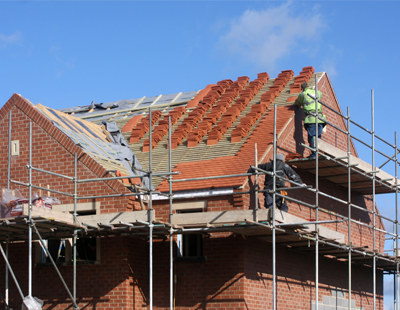2022 was a year that presented an assortment of challenges for the commercial real estate (CRE) market; the aftermath of Covid-19, supply chain issues, and the rising cost of living caused turmoil across the sector and broader economy.
With many of these challenges set to continue to have an impact into this year, here I share the key trends that will affect the commercial real estate sector in 2023 based on the latest EG data.
Build-to-rent investors look outside London
The build-to-rent (BTR) sector has gone from strength to strength over the past few years. This has seen new BTR operators and providers enter the market, with well-known names such as retailer John Lewis recognising the potential of investing in the subsector.
This has seen the number of BTR properties in the UK increase significantly over the past five years with it now representing 7% of new build homes.
This growth is expected to continue. In fact, EG’s December 2022 data showed 69 new rental price records, highlighting the opportunity in the sector and supporting the broader trend seen in EG data where new records are increasing by up to 25% per month.
However, as BTR continues to grow, investors are beginning to look outside of London and to the family homes market for new opportunities. This has already resulted in new developments in Bolton and Ellesmere Port aimed at providing family homes.
With the family homes market set to be the next hotspot for BTR investors, we expect to see the spread of BTR properties grow outside of London and across the UK.
Planning approvals are predicted to surge
A significant backlog in planning approvals has decreased the speed of the decision-making process. EG’s data shows that 2022 planning applications were down 25% in comparison to 2021.
This could have a major impact on the sectors where backlogs are the highest; almost half of each the industrial (49%), leisure (45%), and office (42%) sectors are still awaiting a decision, despite submitting plans last year.
With more than 90% of applications still awaiting a decision, we expect to see a surge in planning approvals in 2023 which will allow new developments to get underway.
EPC ratings take centre stage
This year, Energy Performance Certificate (EPC) ratings will come under the spotlight, with the potential to cause significant challenges for commercial real estate owners.
Government legislation coming into effect on April 1st 2023 states that commercial buildings that do not have an EPC rating of E or above cannot be traded or leased. Failure to ensure a building’s EPC rating meets this new standard could place almost £2.5bn of rental income under threat, making this an issue not to be overlooked by commercial real estate owners.
EG’s Radius data combined with EPC figures show that 120m sq ft of commercial real estate in England will have failing EPCs by April. As a result, these properties will not be able to be leased and owners will face a fine of approximately 12.5% of the property’s rateable value.
Taking a proactive approach to upgrading EPC ratings across the UK must be made an urgent priority by the industry. Not only will this ensure a property can continue to be leased and traded post-April 2023, but it will also put the industry on the right path to meet future legislative updates, with the ratings set to be increased to C in 2027 and B in 2030.
The CRE sector is undoubtedly under pressure to tackle some challenges this year, the updates to EPC legislation being just one. But it is vital for the industry to stay optimistic. With the continued rise of the BTR sector and a potential surge in planning applications, there will be plenty of achievements and developments to champion throughout 2023.









.png)










Join the conversation
Be the first to comment (please use the comment box below)
Please login to comment